Nuclear Energy Utilization Attracts Global Attention under the Spotlight at COP28
(in provisional translation)
(English ver.) 2024-04-17
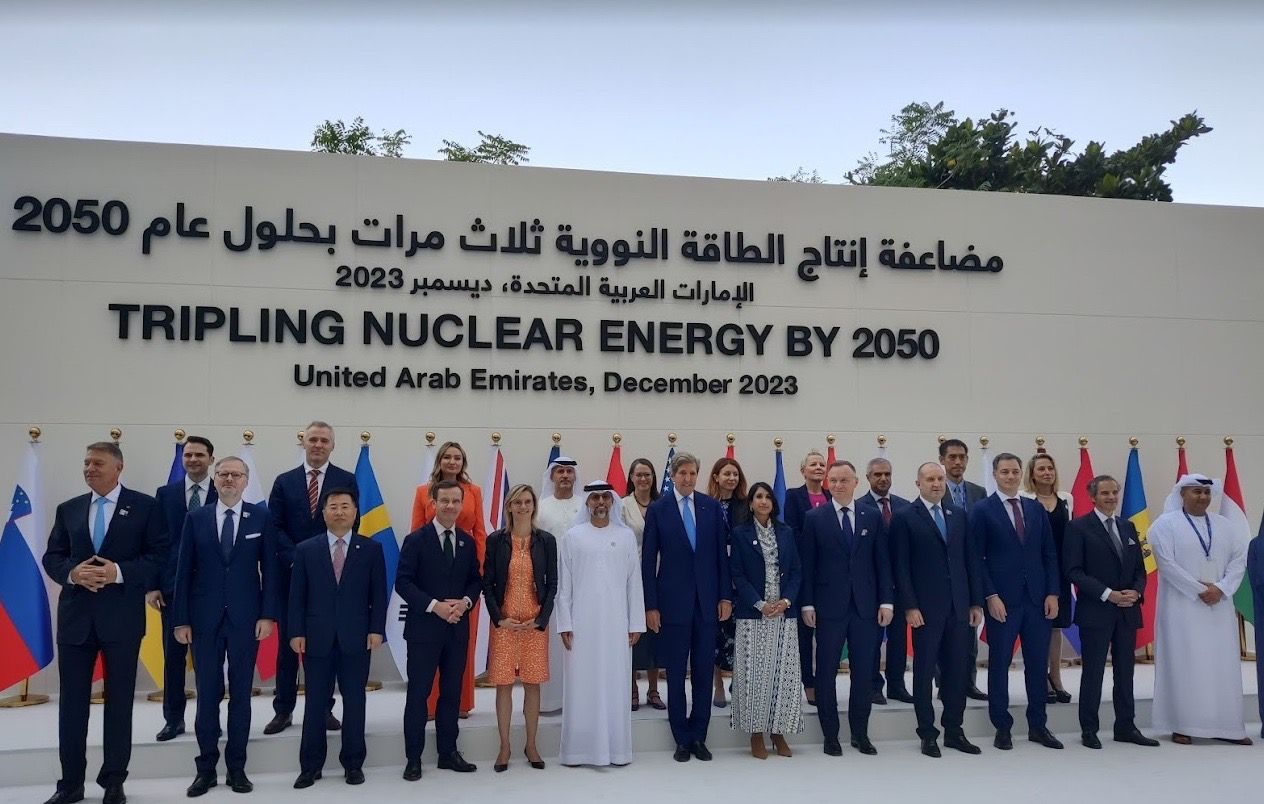
From the viewpoints of ensuring energy security and reducing CO2 emissions, the utilization of nuclear energy is attracting global attention. The 28th Conference of the Parties to the UN Framework Convention on Climate Change (COP28), which was held in the UAE in 2023, recognized the critical role of nuclear energy with its effectiveness specified in the decision document. A declaration to increase global nuclear power generation capacity was also announced at the conference. This article sheds light on the latest movements in the world surrounding nuclear power generation.
Japan and the UK are the frontrunners toward the goal of reducing emissions
The highlight of COP28, held in the UAE from November 30 to December 13, 2023, was the first “global stocktake” (GST), a process through which Parties and stakeholders can see where they are collectively making progress toward meeting the goals of the Paris Agreement. The conference adopted the decision on the outcome of the first GST.
As shown in the graph below, CO2 emissions in Japan declined 3.4% from FY2019 levels, while a slight increase in CO2 emissions from FY2020 was seen due to the economic recovery after the pandemic. Japan’s efforts have been progressing favorably toward meeting the FY2030 goals and achieving carbon neutrality by 2050.
Japan’s progress toward the FY2030 goals and carbon neutrality by 2050
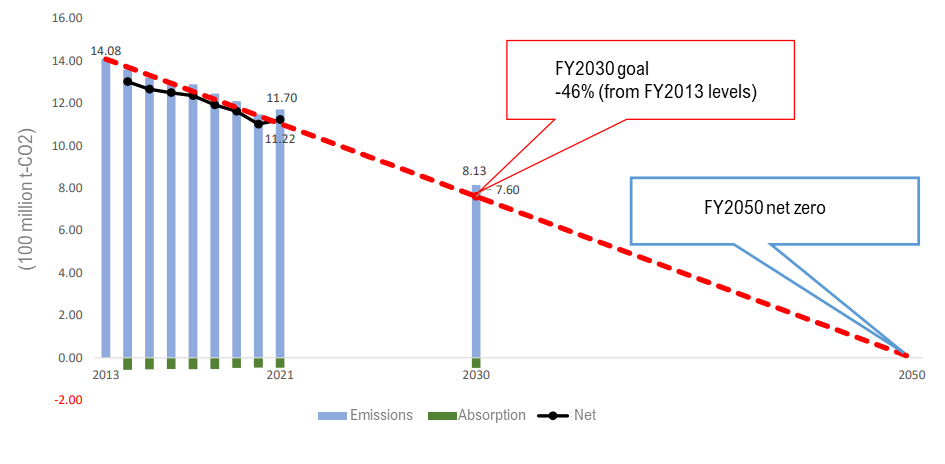
(Source) Excerpt from the material distributed at a meeting on June 26, 2023, of the Council on the Global Environment under the Ministry of the Environment
Among the G7 member countries, the UK demonstrates relatively solid progress as shown below.
Major countries’ progress toward the 2030 goals and carbon neutrality by 2050
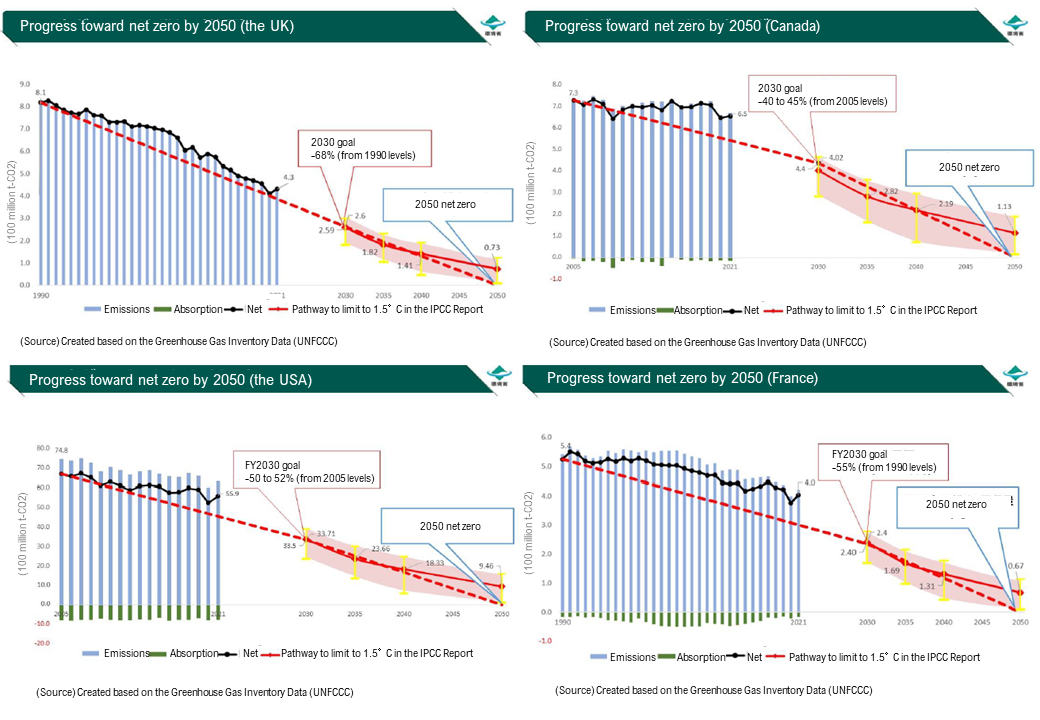
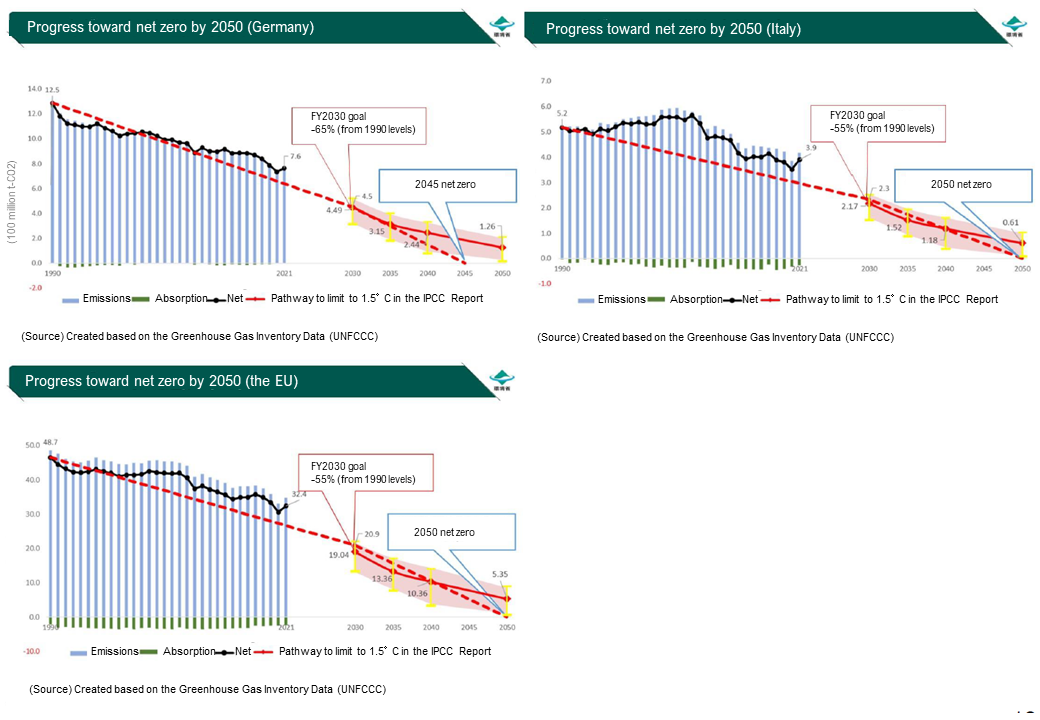
(Source) Excerpt from the material distributed at a meeting on June 26, 2023, of the Council on the Global Environment under the Ministry of the Environment
The decision on the outcome of COP28 includes the utilization of nuclear power for the first time
Based on the respective countries’ situations toward their emission reduction targets and the discussions on the delay in progress on a global scale, the effectiveness of utilization of renewable energy and nuclear power came under the spotlight. As a result, the Global Stocktake agreed at COP28 clearly stated the utilization of nuclear power. According to the World Nuclear Association, this “represents the first time nuclear energy has been formally specified as one of the solutions to climate change in a COP agreement.”
- Statement regarding nuclear energy in the Global Stocktake (excerpt)
- (The Conference) further recognizes the need for deep, rapid and sustained reductions in greenhouse gas emissions in line with 1.5°C pathways and calls on Parties to contribute to the following global efforts, in a nationally determined manner, taking into account the Paris Agreement and their different national circumstances, pathways and approaches:;
[…]
(e) Accelerating zero- and low-emission technologies, including, inter alia, renewables, nuclear, abatement and removal technologies such as carbon capture and utilization and storage, particularly in hard-to-abate sectors, and low-carbon hydrogen production
Furthermore, during COP28, on December 2, 2023, a declaration was launched by 22 countries including Japan whereby they commit to work together to advance a global aspirational goal of tripling nuclear energy capacity from 2020 by 2050, recognizing the different domestic circumstances of each Participant. Three more countries have joined the declaration since then, and as of January 2024, the number of participants in this pledge came to 25.
- The 25 countries that have joined the declaration:
- the United Arab Emirates, the United States, France, Japan, the United Kingdom, Canada, the Republic of Korea, Finland, Sweden, Belgium, Romania, Poland, Bulgaria, the Czech Republic, Ukraine, Slovenia, Slovakia, Ghana, Kazakhstan, Morocco, Moldova, the Netherlands, Armenia, Jamaica, and Croatia
- (Reference) The Declaration to Triple Nuclear Energy (excerpt)
- Recognizing the key role of nuclear energy in achieving global net-zero greenhouse gas emissions/carbon neutrality by or around mid-century and in keeping the 1.5°C limit on the temperature rise within reach and achieving Sustainable Development Goal 7;
Recognizing that analysis from the Intergovernmental Panel on Climate Change shows nuclear energy approximately tripling its global installed electrical capacity from 2020 to 2050 in the average 1.5°C scenario;
The Participants in this pledge commit to work together to advance a global aspirational goal of tripling nuclear energy capacity from 2020 by 2050, recognizing the different domestic circumstances of each Participant (The rest is omitted.)
However, this pledge is not legally binding. And, as the wording “recognizing the different domestic circumstances of each Participant” suggests, they do not commit to triple nuclear energy capacity within their respective countries. They only expressed their intention to work together toward a global aspirational goal of tripling nuclear energy capacity.
There are a couple of reasons why nuclear energy is currently attracting attention. First, it is recognized as one of the important decarbonized sources of energy toward achieving carbon neutrality by 2050. Second, in the middle of the critical energy situation since Russia’s aggression against Ukraine, nuclear energy is recognized to be more valuable than ever from the perspective of ensuring energy security.
Global trends in nuclear energy utilization in the early part of 2024
More specifically, let us look at the global trends in expanding nuclear energy utilization. In the United States, 93 nuclear reactors, the world’s highest number, were operating as of January 2024. Furthermore, the development of a new type of nuclear reactor, referred to as a small modular reactor (SMR), is in progress.
In the UK, nine reactors are currently operating, and efforts are underway to finalize plans to install as many as eight new reactors by 2030. In France, the ratio of nuclear power in total generating capacity is as high as 62.6% with 56 reactors currently in operation. Construction of six more new reactors by 2050, and an additional eight more if possible, is under consideration. These countries, where nuclear energy is already being used extensively, have plans to construct additional reactors.
What about the countries that once aimed to phase out nuclear power generation? Germany had ceased all the operations of domestic nuclear power stations by March 2023. On the other hand, some countries are changing their policies. Italy had shut down all the nuclear power stations by 1990 based on their policy of abandoning nuclear power. However, it launched a new platform to consider a policy for reintroducing nuclear energy to its power mix and developing nuclear-related industries.

A scene of the first meeting of the National Platform for Sustainable Nuclear Power
(Source) Press release by the Ministry of Environment and Energy Security of Italy
In Sweden, there were legislative rules that “cap[ped] the total number of reactors in service to ten and confine[d] reactor construction exclusively to locations where they currently exist[ed].” The Swedish government scrapped the rules and unveiled a roadmap which envisages the construction of new nuclear generating capacity equivalent to at least two large-scale reactors by 2035, with up to ten new large-scale reactors being added by 2045.

Press conference by the Government of Sweden
(Source) Material published by the Swedish government
In addition to the construction of new reactors, some countries are extending the lifetime of existing reactors from the viewpoint of their effective utilization. For example, Belgium once planned to shut down all its nuclear power stations by 2025. However, the government changed its policy in December 2023 to extend the operating life of two nuclear reactors by a further ten years.
Countries which have not utilized nuclear power so far are becoming more interested in its utilization. In the leaders’ meeting of the Asia Zero Emission Community (AZEC) held in December 2023, nuclear power generation was under the spotlight as one of the solutions to climate change. AZEC is a platform consisting of Asian countries that are promoting decarbonization in diverse pathways toward the common goal of carbon neutrality. The leaders’ joint statement, adopted by participating countries including many with no experience in nuclear power generation, specifies nuclear energy utilization as one of the methods for achieving decarbonization.
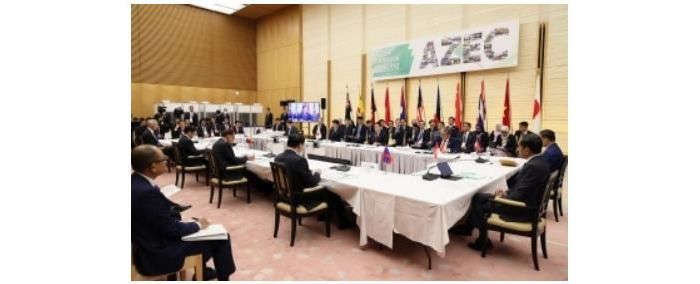
A scene from the AZEC Leaders’ Meeting with Prime Minister Kishida in attendance
(Source) Cabinet Public Affairs Office
Japan’s policy
In Japan, a cabinet decision was made in February 2023 on the Basic Policy for the Realization of Green Transformation (GX.) The basic policy states that nuclear energy is to be utilized in line with the Strategic Energy Plan on the major premise of ensuring safety, while lessons learned from the accident at TEPCO’s Fukushima Daiichi Nuclear Power Station must continue to be given due consideration. It also advocates R&D promotion through international collaboration, building resilient supply chains, and ensuring nuclear power safety as well as nuclear security.
Furthermore, Japan, with its accumulated experience in constructing and operating nuclear power stations, is expected to play an important role in supporting countries which are hoping to increase the utilization of nuclear energy. More specifically, Japan will provide support for building infrastructure for nuclear-related technologies and developing human resources in those countries. It will also cooperate in developing a supply chain for materials and equipment that are necessary to construct nuclear power stations. We think that these activities will not only contribute to solving global energy issues, but also help maintain and enhance our domestic manufacturing and R&D infrastructure.
Divisions in Charge
About this article
Nuclear Energy Policy Planning Division, Electricity and Gas Industry Department, ANRE
About the Special Contents
Research and Public Relations Office, Commissioner’s Secretariat, ANRE
![]() The original Japanese text of this article; Click here
The original Japanese text of this article; Click here